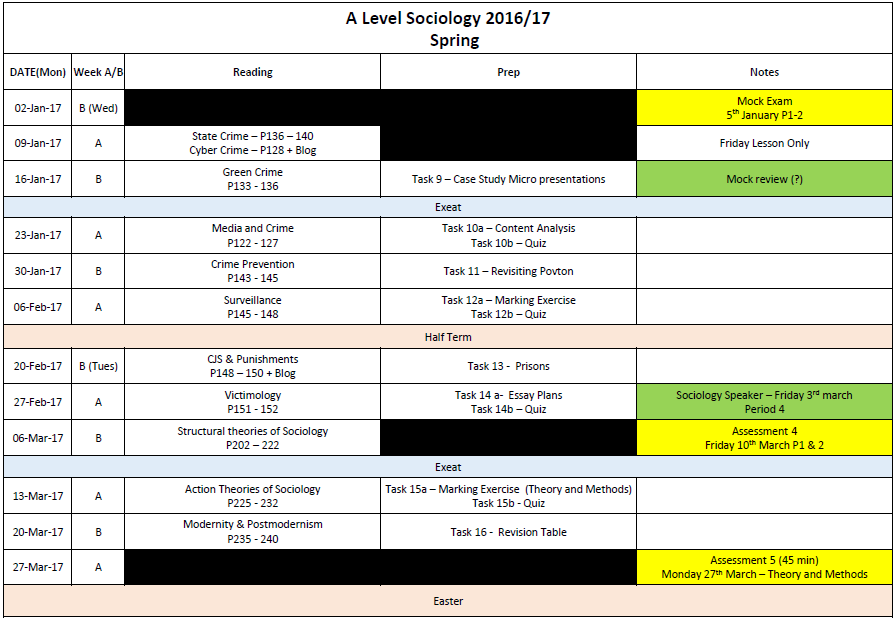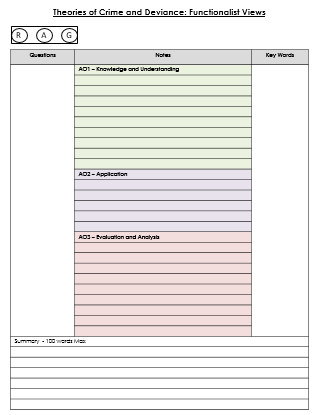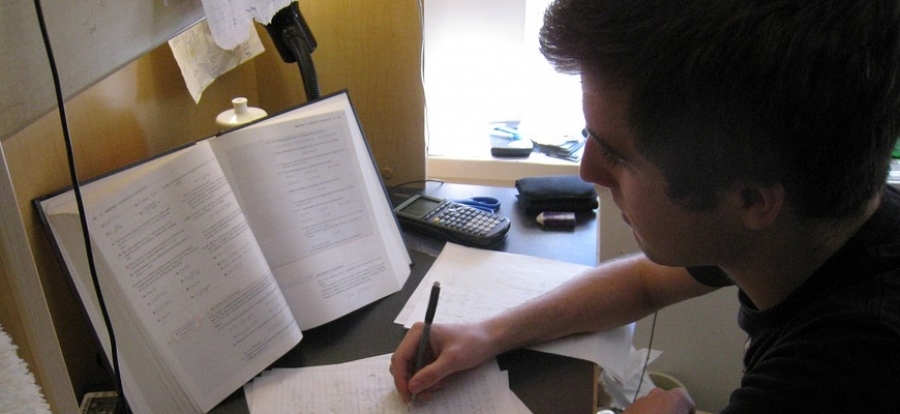So I started to using a new Lecture-Seminar system with the A level classes. To do this I gave the students a termly outline of what we will be covering each week. Along with this, I provided them with any preparation work they need to complete, which form the basis of the system, and when the assessments would be happening. This not only gave the students some focus for their independent study, as they didn’t need to wait for me to tell them what to prepare or when assessments will be happening; it also kept me much more organised as I also needed to follow the plan as much as possible. That is not to say the system is not flexible or adaptable, however it means that I need to inform the students of changes as early as possible.
At the end of the Autumn term “This gave the students some focus for their independent study.”I conducted an academic student voice survey to see what the students’ thoughts were on this system. In the most part it was positive, but many of the students said that they felt ill-prepared for independent study and didn’t really know HOW to do it effectively.
I had been over the spaced revision system with the students’ multiple times, but it didn’t seem to be helping with the self-study, so it needed to be adapted slightly. Using the various blogs about spaced learning theory I found online, along with ones discussing knowledge organisers, note-taking systems and other independent learning ideas, I put together a system that scaffolds independent study into manageable chunks.
The system follows a number of steps:
Step 1: Lesson preparation
In this step the students check the term outline to see which topic is being covered that week and what prep task they need to complete. They can download the lecture PowerPoint and add notes to it from the class blog, textbook and other online sources. They also need to complete the seminar task in preparation for the seminar lesson, the instructions for which are also held on the class blog. Examples of the seminar tasks can be found here.

Step 2: Attend the lesson
This may seem obvious, but for students who have completed step one may feel that they don’t need to attend the lectures or seminars as they have enough information already. I make it clear to the students that the lecture will add to the pre-reading notes and the seminars will focus more on the Application and Evaluation skills as well as examination technique. In addition, lessons are still mandatory as they are not at university just yet.
Step 3: Knowledge Organiser
These are an adaption of the Cornell Notes page, and different to the knowledge organisers I use with GCSE, which are much more graphical.

These are completed after the lesson, firstly without notes and then in a different colour with notes, so that they can really see what they have understood and what they need to read over or ask about. I suggest that the students write down any questions they have on post it notes and stick them to the question column. These can then be checked using the 4’Bs (Book, Blog, Buddy, Boss).
Step 4: Quizzing / Testing
After taking at least a two hour break from this subject and topic “The timetable is reviewed each term so that enough time is being spent on each subject.”(ideally overnight), students should look back at their knowledge organiser and try to summarise the topic into a single paragraph. This would then work as a trigger paragraph once they start revising and need to prioritise their topics.
I also recommend to my students in Sociology to buy the Hodder Workbooks for this process, as at this stage they can complete the topic pages in the workbook and self-mark them, making corrections to highlight areas of focus for revision or support. Alternatively, you can set up self-marking quizzes using google docs or get them to complete questions from the textbook. The main idea in this stage is that the students practice retrieval of information to see where the gaps are.
Step 5: Exam Questions
In this stage the students look at and plan longer answer examination questions. They can get these from past papers (if you have them); in Sociology we are limited with the number of exam papers we have due to the new linear exam, so I put together exam-style question booklets from various textbooks and resources. I tell my students that they should be looking at the 10, 20 and 30 mark questions in this stage, and I am expecting to see the question and item (if there is one) deconstructed and a completed single A4 essay plan.
After doing the essay plan, which I ask them to peer compare or check with me, they are to write just a single paragraph, introduction or conclusion to practice the PEAE structure. As they become more confident in this they move on to timed practice.
When I introduce this system to the students I take the time to go through their timetable with them and help to block time for each stage of the process, making sure that they are using free periods well and still having time to socialise, relax and be young people. This timetable is then reviewed each term so that enough time is being spent on each subject. I think that it is important that we as teachers/tutors take the time to do this with the students, because it is very easy to assume that they know how to manage their time due to their age, when in all likeliness many of them have had little experience of having to do it.
The students do seem to have taken to the system well but it isn’t perfect yet and will continue to need refinement and reviewing but I have found it to be a good starting point to help my students to become more independent as well as helping me to find some balance in my workload.
How do you encourage independence in learning? Let us know below.


















